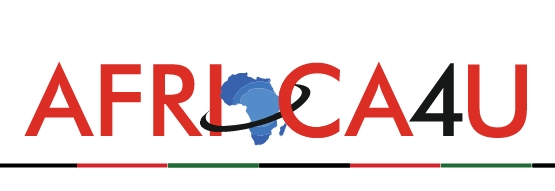(4 Minutes Read)
Attacks by Houthi rebels since mid-November 2023 have disrupted maritime security in the Gulf of Aden, the Red Sea, and the larger Western Indian Ocean. The Bab al-Mandab Strait, connecting the Red Sea with the Gulf of Aden, is a vital artery for global shipping, offering the shortest transit between Asia and Europe. According to rough estimates, the strait accounts for 12 percent of global trade, 30 percent of worldwide container traffic, and transports over USD one trillion worth of goods. In the aftermath of the Houthi rebel missile attack on cargo ships, ships traveling between the Far East and Europe are making a detour around the entire African continent via South Africa’s Cape of Good Hope, adding thousands of miles to their journey.
The turmoil in the Red Sea presents Africa, particularly South Africa, with unexpected economic benefits. Shipping services across Africa are likely to experience a surge in demand due to the diversion of traffic. But the moot question is, are the continent’s port services geared up to reap the benefits?
The increased traffic, reportedly, has created huge congestion in bunkering ports around the continent, putting pressure on the port infrastructure. There are concerns about the capacity of South African ports and other ports in Africa, including Mauritius’ Port Louis, to cope with the surge in demand for bunkering. The World Bank 2022 index rates South Africa’s major ports, like Durban, Cape Town, and Ngqura ports, among the worst globally. Durban is still the most advanced and largest port in Africa, which means rerouted ships have limited choices for replenishment.
Issues like berthing delays, blockages, and inefficiencies in the ports of Durban, Cape Town, and Ngqura plague South African ports. Experts point out that this could have been a boon for Saldanha Bay and Port Elizabeth if they had sound bunker infrastructure. The local industry experts point out that, if the South African ports were sufficiently equipped, some of these ships proceeding to the EU ports could have used them as transshipment options, as there are regular services between South Africa and the EU for both container and break-bulk cargoes. Regrettably, South African ports seem not to have learned from their experience of an influx of container vessels passing through the South African coast when the Suez Canal was blocked two years ago.
The other large African deep-water ports along the Cape route are Mombasa in Kenya and Dar es Salaam in Tanzania. They, too, are underequipped to handle the rising traffic. A spokesperson from the shipping industry said that Walvis Bay (Namibia) or Port Louis (Mauritius) could be better options for bunkering en route.
It’s not that African ports are making efforts to cater to the demand. The portal of the Mozambique-based CPG Bunkering has announced that it has stocked up different types of fuel in the ports of Nacala and Maputo to meet the demand of the re-routed ships along the South Coast of Africa.
At the same time, the Red Sea crisis has contributed to the loss of business for countries like Djibouti, Egypt, etc. Djibouti’s minister for economy and finance, Ilyas Musa Dawaleh, admitted that Djibouti never anticipated such a sudden development. In Egypt, the diversion has caused a sharp fall in revenue from the Suez Canal.
US intelligence has revealed that the Red Sea crisis may turn out to be a long-drawn one. Political analysts predict that the US may use the Houthi attack as a pretext to permanently deploy forces to control the Bab al-Mandab Strait and militarize the region. This can be a tool to counter Chinese influence and its trade through the strait and limit Russia’s regional capabilities.
It is still too early to predict how long and how far the Red Sea Crisis will impact. But if African nations want to capitalize on such opportunities, they need to seriously plan contingency plans for “what to do if Suez is closed?” and divert a sixth of the world’s shipping around the continent. Let us hope that the Red Sea crisis will motivate African countries to evolve a strategy to beef up their ports.





